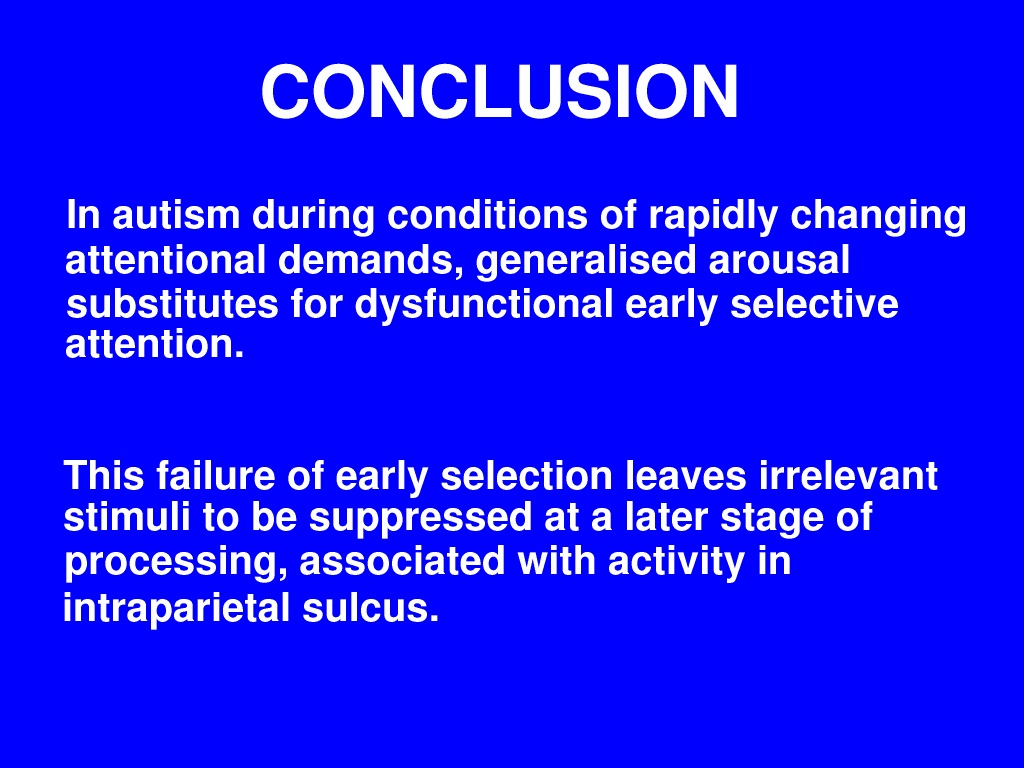 In conclusion, on the basis of our combined EEG and fMRI findings, we
believe that in autism during conditions of rapidly changing
attentional demands, generalised arousal substitutes for dysfunctional
early selective attention. This failure of early selection is
reflected in a lack of inter-hemispheric differences in EEG signals
that arise from secondary visual areas in inferior-lateral
occipitotemporal cortex, and leaves irrelevant stimuli to be suppressed
at a later stage of processing which is associated with activity in
intraparietal sulcus.
In conclusion, on the basis of our combined EEG and fMRI findings, we
believe that in autism during conditions of rapidly changing
attentional demands, generalised arousal substitutes for dysfunctional
early selective attention. This failure of early selection is
reflected in a lack of inter-hemispheric differences in EEG signals
that arise from secondary visual areas in inferior-lateral
occipitotemporal cortex, and leaves irrelevant stimuli to be suppressed
at a later stage of processing which is associated with activity in
intraparietal sulcus.
`fMRI Evidence for Generalised Arousal as a Substitute for Early Selection in Autism during Conditions of Shifting Visual Spatial Attention', Matthew Belmonte, 10 November 2001


![[previous]](../left_arrow.gif)
![[contents]](../up_arrow.gif)
![[next]](../right_arrow.gif)